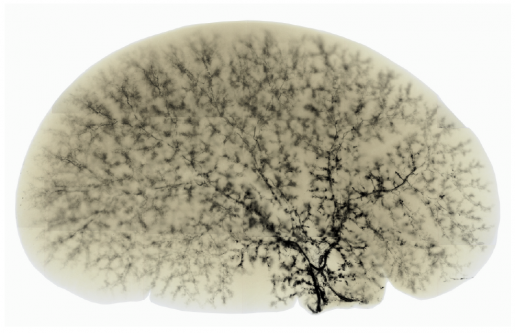Image of the Month: The Liver’s biliary tree
Touch the right side of your body, right beneath the rib cage. That’s where the liver is — it is the largest solid organ in the body and one of the busiest ones. It filters all the blood in the body breaking down and removing toxins such as alcohol and drugs. It also contributes to maintaining healthy blood sugar levels, normal blood clotting and produces bile, a fluid that helps digest fats and remove waste.
The Image of the Month, courtesy of the laboratory of Dr. Hamed Jafar-Nejad, shows the typical branched-out structure of the biliary tree, a network of small tubes that channel bile from the liver into the intestine where it carries out its digestive and clearing functions.

One of the research interests of the Jafar-Nejad laboratory is to better understand Alagille syndrome, a genetic condition that reduces the number of branches in the biliary tree, sometimes to less than half of what typically is present in a healthy liver. Having fewer ducts to drain through, bile flow from the liver slows or stops, leading to bile buildup that in time causes liver damage. Current treatments focus on delaying disease progression; the only cure for liver disease in Alagille syndrome is liver transplantation.
However, the Jafar-Nejad lab recently developed a novel approach that prevented liver damage in animal models of Alagille syndrome, opening new possibilities for treating the human condition in the future. Read about it in the journal Hepatology, and find an interview with the authors in From the Labs.
Learn about other research interests of the Jafar-Nejad lab here.
Dr. Jafar-Nejad is professor of molecular and human genetics at Baylor College of Medicine.



